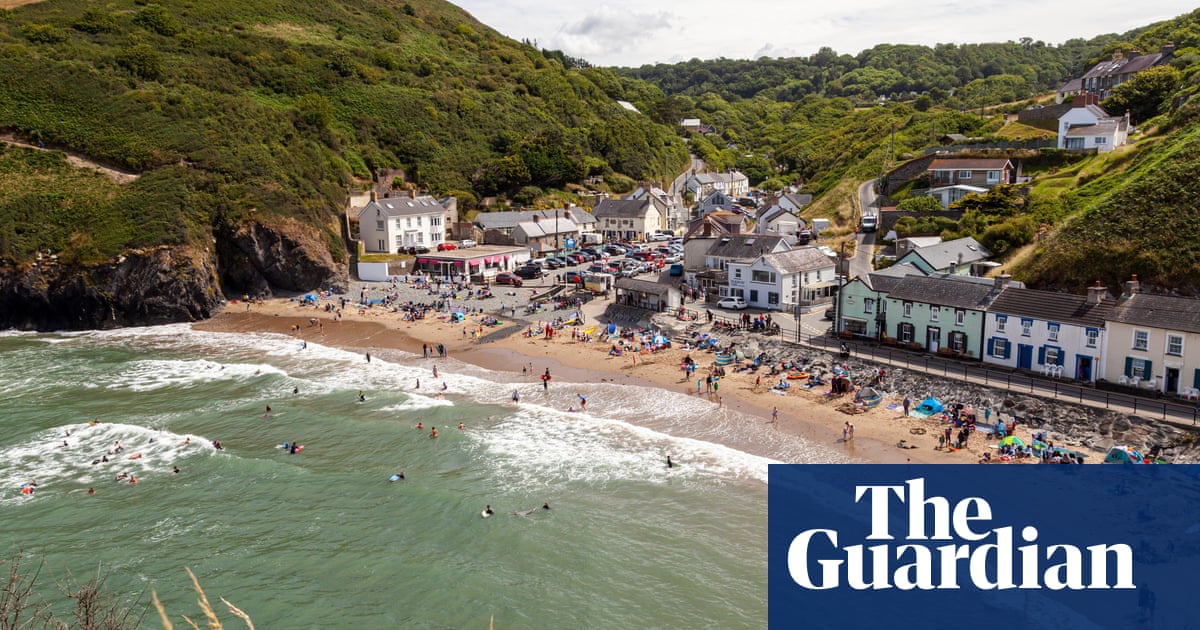 ADVERTISEMENT
ADVERTISEMENT
Asia’s dependence on Middle East oil and gas — and its relatively slow shift to clean energy — make it vulnerable to disruptions in shipments through the Strait of Hormuz, a strategic weakness highlighted by the war between Israel and Iran.
Iran sits on the strait, which handles about 20% of shipments of the world’s oil and liquefied natural gas, or LNG. Four countries — China, India, Japan and South Korea — account for 75% of those imports.
Japan and South Korea face the highest risk, according to analysis by the research group Zero Carbon Analytics, followed by India and China. All have been slow to scale up use of renewable energy.
In 2023, renewables made up just 9% of South Korea’s power mix, well below the 33% average among other members of the Organization for Economic Cooperation and Development, or OECD. In the same year, Japan relied more heavily on fossil fuels than any other country in the Group of Seven, or G7.
A truce in the 12-day Israel-Iran war appears to be holding at the time of writing, reducing the potential for trouble for now. But experts say the only way to counter lingering uncertainty is to scale back reliance on imported fossil fuels and accelerate Asia’s shift to clean, domestic energy sources.
“These are very real risks that countries should be alive to — and should be thinking about in terms of their energy and economic security,” said Murray Worthy, a research analyst at Zero Carbon Analytics.
Japan and South Korea are vulnerable
China and India are the biggest buyers of oil and LNG passing through the potential chokepoint at the Strait of Hormuz, but Japan and South Korea are more vulnerable.
Japan depends on imported fossil fuels for 87% of its total energy use and South Korea imports 81%. China relies on only 20% and India 35%, according to Ember, an independent global energy think tank that promotes clean energy.
“When you bring that together — the share of energy coming through the strait and how much oil and gas they rely on — that’s where you see Japan really rise to the top in terms of vulnerability,” said Worthy.
Three-quarters of Japan’s oil imports and more than 70% of South Korea’s oil imports — along with a fifth of its LNG — pass through the strait, said Sam Reynolds of the Institute for Energy Economics and Financial Analysis.
Both countries have focused more on diversifying fossil fuel sources than on shifting to clean energy.
Japan still plans to get 30-40% of its energy from fossil fuels by 2040. It’s building new LNG plants and replacing old ones. South Korea plans to get 25.1% of its electricity from LNG by 2030, down from 28% today, and reduce it further to 10.6% by 2038.
To meet their 2050 targets for net-zero carbon emissions, both countries must dramatically ramp up use of solar and wind power. That means adding about 9 gigawatts of solar power each year through 2030, according to the thinktank Agora Energiewende. Japan also needs an extra 5 gigawatts of wind annually, and South Korea about 6 gigawatts.
Japan’s energy policies are inconsistent. It still subsidises gasoline and diesel, aims to increase its LNG imports and supports oil and gas projects overseas. Offshore wind is hampered by regulatory barriers. Japan has climate goals, but hasn’t set firm deadlines for cutting power industry emissions.
“Has Japan done enough? No, they haven’t. And what they do is not really the best,” said Tim Daiss, at the APAC Energy Consultancy, citing Japan’s program to increase use of hydrogen fuel made from natural gas.
South Korea’s low electricity rates hinder the profitability of solar and wind projects, discouraging investment, a “key factor” limiting renewables, said Kwanghee Yeom of Agora Energiewende. He said fair pricing, stronger policy support and other reforms would help speed up adoption of clean energy.
China and India have done more — but gaps remain
China and India have moved to shield themselves from shocks linked to changing global energy prices or trade disruptions.
China led global growth in wind and solar in 2024 and generating capacity rose 45% and 18%, respectively. It has also boosted domestic gas output even as its reserves have dwindled.
By making more electricity at home from clean sources and producing more gas domestically, China has managed to reduce imports of LNG, though it still is the world’s largest oil importer, with about half of the more than 11 million barrels per day that it brings in coming from the Middle East. Russia and Malaysia are other major suppliers.
India relies heavily on coal and aims to boost coal production by around 42% from now to 2030. But its use of renewables is growing faster, with 30 additional gigawatts of clean power coming online last year, enough to power nearly 18 million Indian homes.
By diversifying its suppliers with more imports from the US, Russia and other countries in the Middle East, it has somewhat reduced its risk, said Vibhuti Garg of the Institute for Energy Economics and Financial Analysis.
“But India still needs a huge push on renewables if it wants to be truly energy secure,” she said.
Risks for the rest of Asia
A blockade of the Strait of Hormuz could affect other Asian countries and building up their renewable power generating capacity will be a “crucial hedge” against the volatility intrinsic to importing oil and gas, said Reynolds of the Institute for Energy Economics and Financial Analysis.
Southeast Asia has become a net oil importer as demand in Malaysia and Indonesia has outstripped supplies, according to the ASEAN Centre for Energy in Jakarta, Indonesia. The 10-nation Association of Southeast Asian Nations still exports more LNG than it imports due to production by Brunei, Indonesia, Malaysia, and Myanmar. But rising demand means the region will become a net LNG importer by 2032, according to consulting firm Wood Mackenzie.
Use of renewable energy is not keeping up with rising demand and production of oil and gas is faltering as older fields run dry.
The International Energy Agency has warned that ASEAN’s oil import costs could rise from $130 billion in 2024 to over $200bn by 2050 if stronger clean energy policies are not enacted.
“Clean energy is not just an imperative for the climate — it’s an imperative for national energy security,” said Reynolds.
On Friday, the price of Brent crude oil, the international benchmark, was up 0.55% on the day at $68.10 a barrel. Over the month, the fuel has risen by 6.26% in value, although prices have pulled back from last week’s peak.











